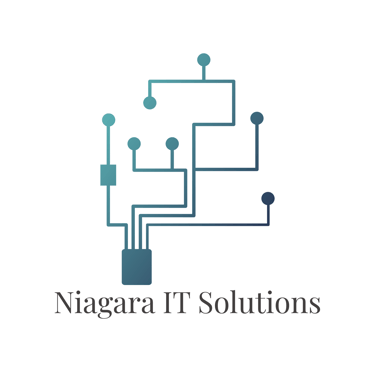Keeping IT costs down
Simple steps for Small Businesses to keep their IT costs low.
Eric Waschinski
12/27/20242 min read


Running a small business often means juggling multiple responsibilities, and managing IT costs is one of the biggest challenges. While technology is essential for growth, staying within budget is equally critical. Here are some practical tips to help small businesses keep their IT expenses under control without sacrificing performance or security.
1. Embrace Cloud Solutions
Cloud-based services often provide scalable, cost-effective solutions compared to traditional on-premise hardware. Tools like Google Workspace or Microsoft 365 offer powerful functionalities for email, document sharing, and collaboration at a predictable monthly cost, eliminating the need for expensive servers and maintenance.
2. Invest in Open-Source Software
Open-source alternatives to costly commercial software can save a significant amount. For instance, consider LibreOffice as an alternative to Microsoft Office or GIMP for image editing instead of Adobe Photoshop. These tools are free and often meet the needs of most small businesses.
3. Outsource IT Support
Hiring an in-house IT team can be expensive. Instead, consider outsourcing IT support. Here at Niagara IT Solutions we offer a range of services, including system monitoring, data backups, and cybersecurity, for a fraction of the cost of maintaining a full-time team. We can tailor a solution specifically for your needs including having a physical contractor onsite or on call, full-time or parttime.
4. Prioritize Cybersecurity on a Budget
Small businesses are often targets for cyberattacks, so investing in basic cybersecurity measures is a must. Affordable solutions like antivirus software, firewalls, and password managers can provide essential protection. Additionally, conducting regular employee training on cybersecurity best practices can prevent costly breaches.
5. Maintain Hardware Smartly
Extending the life of your hardware can lead to significant savings. Regular maintenance, such as cleaning hardware, updating software, and replacing components like hard drives or batteries, can delay the need for expensive replacements.
6. Take Advantage of Tech Grants and Discounts
Many tech companies and organizations offer discounts or grants specifically for small businesses. For example, Microsoft and Google offer discounted rates for their software and services, while organizations like TechSoup provide discounted technology products for nonprofits and small businesses.
7. Evaluate and Eliminate Redundancies
Conduct periodic audits of your IT systems to identify and eliminate unused or redundant software and subscriptions. This practice ensures that you're only paying for tools and services that add value to your operations.
8. Leverage Remote Work
Encouraging remote work can reduce the need for physical office space and associated IT infrastructure. Cloud-based tools and communication platforms like Slack or Zoom make it easier to manage remote teams efficiently.
9. Plan for Upgrades Strategically
Avoid emergency purchases by planning your IT upgrades. Scheduling upgrades during sales periods or taking advantage of bundled deals can save money in the long run. Additionally, consider leasing equipment instead of buying outright to spread costs over time.
10. Monitor Energy Consumption
IT equipment can consume significant energy. Opt for energy-efficient devices and encourage habits like shutting down computers after work hours to lower electricity costs.
By following these strategies, small businesses can optimize their IT expenditures, ensuring they get the most value from their technology investments while staying within budget. Remember, the key is to balance cost-efficiency with maintaining the quality and security of your IT systems.
Niagara IT Solutions is here to help, please contact us: contact@niagaraitsolutions.com
Solutions
Customized IT services for small businesses.
contact@niagaraitsolutions.com
© 2024. All rights reserved.
